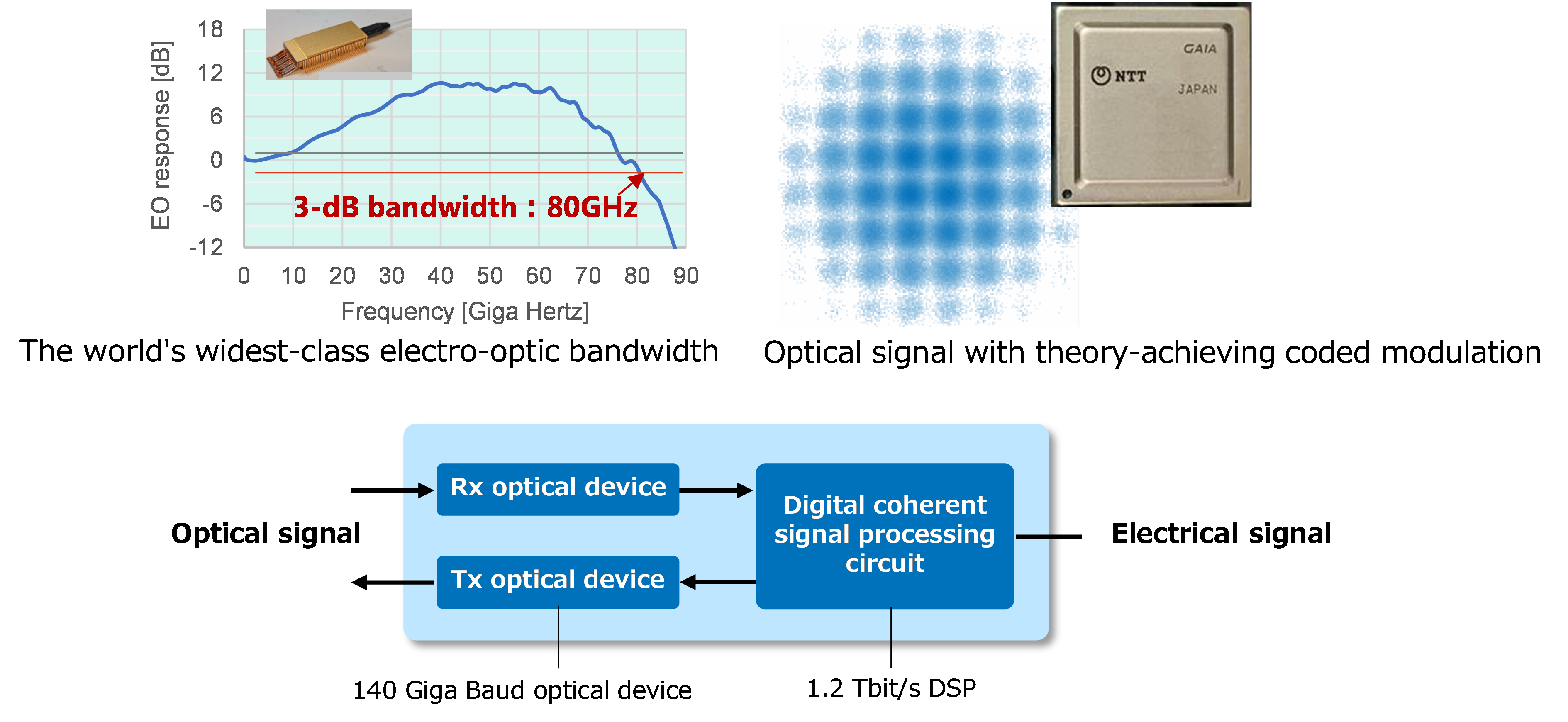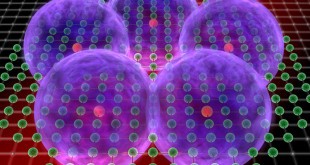The explosive growth of optical communication technology in the past decades has revolutionized the telecom industry and created a global communication infrastructure with optical networks. Optical communication links and networks are essential for the Internet backbone as well as for interconnects used in data centres and high-performance computing systems. The increasing demand for fiber optic solutions is driven by the need for high bandwidth communication, alongside the growing awareness of the benefits of adopting fiber optic technology.
Usually, a fiber optic communication system consists of three main components: optical transmitter, fiber optic cable and an optical receiver. The optical transmitter converts information-carrying electronic signal to optical signal; the fiber optic cable carries the optical signal from the optical transmitter to the optical receiver; and the optical receiver reconverts the optical signal to an electronic signal so that the information is recovered and delivered to the destination. The most commonly used optical transmitter is semiconductor devices like LEDs (light-emitting diodes) and laser diodes. Photodetector is the key part of an optical receiver. It converts light into electricity using photodetector effect
The main driver of optical communication networks is advancement on optical fibers and optical components. An optical signal consists of a series of pulses produced by switching a laser beam off and on. Coherent optics utilizes the ability to transmit multiple bits of information using light, including amplitude and phase modulation, instead of a simple binary on-off approach. Adding QPSK and QAM, plus polarization means you can move a lot more data onto a single strand of fiber.
Coherent optical communication systems have the capability to carry multi-dimensional information (e.g. intensity, phase and polarization) and relatively high receiver sensitivity, optical communication systems can transport information with higher speed and extended reach using a single wavelength.
Coherent receivers use a local oscillator laser in combination with a pair of hybrid couplers and four photodetectors per polarization, followed by high speed ADCs and digital signal processing to recover data modulated with QPSK, QAM, or OFDM.
Due to the urgent demand from the emerging large-scale cloud computing, high definition videos and 5G applications, both research and industry communities are exploring ways to further increase spectral efficiency(SE) and capacity of the optical communication systems.
Different multiplexing and modulation techniques have been extensively studied to increase the total capacity, including time-division multiplexing (TDM), polarization-division multiplexing (PDM), wavelength-division multiplexing (WDM), quadrature-amplitude modulation (QAM), mode-division multiplexing (MDM) and space-division multiplexing (SDM)
100 Gigabit Ethernet (GbE) coherent optical communication systems have been successfully deployed for years, and the 400 GbE standard was also developed in 2017. In 2019, 400 GbE client-side pluggable optical modules started to flourish, and 400 GbE line-side pluggable modules debuted in 2020. The industry is marching towards the next generation 800 GbE or even 1.6 TbE. High-baud-rate single-carrier (SC) coherent optical technology is perhaps a key factor to enable this trend.
For a SC coherent optical system, two options are generally considered to improve the capacity according to: Data rate = Bits/ Symbol * Baud rate. One is to use high-order QAM formats and the other one is to increase the baud rate of the channel. The first method can improve system capacity together with SE, achieving a given data rate with a lower baud rate and smaller bandwidth. However, higher-order QAM signals require larger optical signal to noise ratio (OSNR) and are less tolerable to phase noise and nonlinear effects. Thus it is more suitable for short reach links. Furthermore, another important parameter that impacts the choice of higher-order QAM is the effective number of bits (ENOB) of the digital to analog convertor (DAC). Current DACs typically feature 8-bits resolution with an ENOB of less than 6 bits, which is pretty challenging.
The receiver always leads the bandwidth competition with the transmitter. At present, balanced photodiodes (BPDs) can achieve > 100 GHz OE bandwidth, which can satisfy the latest needs for high-baud-rate coherent optical communication systems. In contrast, EO modulators face greater challenges, the bandwidths of widely used commercial modulators are around 40 GHz, which are not sufficient for the forthcoming above 100 GBd application. Therefore, the material and structure choices of the modulators are becoming the key parts to realize high-baud-rate coherent optical communication systems
Coherent Optical System Based On QAM Formats
A narrow linewidth laser (typically < 100 kHz) is used to provide a continuous carrier, and the carrier is divided for two orthogonal polarization modes through a polarization beam splitter (PBS) to achieve PDM. For each polarization mode, two multi-level signals are generated via an arbitrary waveform generator (AWG) after performing transmitter-side (Tx-side) DSP, then coupled to an IQ modulator after amplified to suitable levels.
After combined by a polarization beam combiner (PBC), the modulated signals are amplified by an EDFA and transmitted through an optical channel. Then an optical filter is added to filter the out-of-band noise. At the receiver-side (Rx-side), the incoming light is first split by a PBS and mixed with the light from a local oscillator (LO) by a 90-degree hybrid then detected by four BPDs. When the OE conversion is completed, the electrical signal is first filtered by low pass filters (LPF) to mitigate inter-symbol interference (ISI). After performing analog to digital convention, the sampled electrical signal is processed by DSP algorithms for compensation and recovery.
Advanced DSP Algorithms
Another advantage of coherent optical systems is the ability to employ a chain of DSP algorithms for low-loss compensation, instead of using separate optical components. A lot of advanced algorithms have been developed for higher baud rate and QAM formats at both the Tx- and Rx-side for pre- and post-compensation.
The performance of a high-baud-rate high-order QAM signal suffers the distortions from the transmitter bandwidth limitation. Digital pre-emphasis is used to mitigate the bandwidth constraint introduced by EO/OE components
NTT: World’s Largest Capacity of 1.2 Tbit/s Per Wavelength Achieved by Newly Developed Digital Coherent Signal Processing Circuit and Optical Device
With the increasing distribution of video data and cloud applications, new information communication services such as 5G services, and the rapid growth of remote work, information communication traffic has been increasing and will continue to increase in the future. Thus, it is necessary to reduce the power consumption and cost required for transmission per unit bit in backbone optical communication networks at a rate of about 1/10 every ten years.
However, with conventional technology, it has been difficult to sufficiently reduce the power consumption of communication devices that accompanies further increases in their capacity. Toward this end, NTT has been developing advanced optical transmission technology and optical device that can economically and significantly expand the capacity of existing optical transmission systems.
Our developed device utilizes a digital coherent detection scheme, in which the polarization, amplitude, and phase of light are captured as digital data. The signal distortion that occurs in the optical fiber transmission channel and optoelectronic devices are compensated and equalized through advanced signal processing. Figure 1 shows the configuration of an optical signal transceiver with a maximum transmission capacity of 1.2 Tbit/s. The transceiver consists of a cutting-edge coherent DSP circuit (Fig. 1 upper right photo) and a 140-Giga baud class optical device with the world’s widest-class opto-electrical response bandwidth (Fig. 1 upper left photo).

By using the proprietary developed device, we have increased the optical signal modulation speed to the world’s highest 140 Giga baud and achieved 1.2 Tbit/s per wavelength, which is 1.5 times faster than before. Also, the developed device enables to double the optical transmission distance of 800 Gbit/s.
Coherent DSP circuit
The coherent DSP circuit combines cutting-edge coded modulation (*3) with transmission performance approaching the theoretical limit and newly developed forward error correction (*4) that can correct bit errors in large amounts of data with low power consumption. This results in flexible coded modulation (*5) that maximizes the potential of the high-speed optical devices. Furthermore, by utilizing a power-efficient algorithm to equalize signal distortion in the optical fiber transmission channel and the advanced CMOS (*6) processes, we have achieved a digital signal processing of 1.2 Tbit/s per wavelength with low power consumption.
140 Giga baud class optical device
We have developed an ultra-high-speed optical transmitter device that uses the world’s fastest-class optical modulator chip with NTT’s original structure and a newly designed low-loss high-speed interface.
By applying these developed devices and schemes to polarization division multiplexed 64QAM (*7), we have achieved optical transmission at 1.2 Tbit/s per wavelength.
Comparison with existing technology
With these developed devices, the transmission capacity can be increased to 1.2 Tbit/s per wavelength, which is 12 times faster than the widely-used commercial optical transmission system (100 Gbit/s per wavelength). By expanding the transmission capacity per wavelength, the power consumption per bit can be reduced to less than 10% of the existing optical transceivers.
As a result, the capacity of optical transmission system will be increased by 12 times and the power consumption per bit will be reduced to 10% of the widely-used commercial system (100 Gbit/s per channel). The improvements in the performance and power consumption of optical transmission systems should contribute to an all-photonics network in the IOWN (*2) concept.
References and Resources also include:
https://group.ntt/en/newsrelease/2022/09/05/220905a.html
 International Defense Security & Technology Your trusted Source for News, Research and Analysis
International Defense Security & Technology Your trusted Source for News, Research and Analysis
